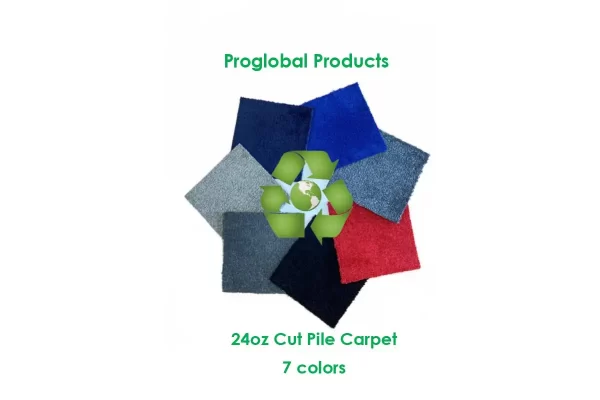Just like there is no ‘I’ in team, there also isn’t one in green. Successfully becoming, staying and saving green while exhibiting across multiple tradeshows takes collaboration among companies, their staff and suppliers.
 Highlighting this point is “The Green Edge,” a book where Bowman Change Inc. Founder and CEO Tom Bowman acts as a green guide for exhibit managers and meeting planners, bringing misconceptions about sustainability to the forefront. While showing that going green can be cost-effective, he illustrates that when people think big and come together, sustainable success happens.
Highlighting this point is “The Green Edge,” a book where Bowman Change Inc. Founder and CEO Tom Bowman acts as a green guide for exhibit managers and meeting planners, bringing misconceptions about sustainability to the forefront. While showing that going green can be cost-effective, he illustrates that when people think big and come together, sustainable success happens.
“To do this type of thing requires training. You got to get everyone around the table and explain to them that you’re doing this to save money and go green. Usually when you tell people you’re going green, they become highly motivated. People want to be part of something good,” explained Bowman. “Companies that are pioneers and having big success set big goals and tell their staff why they are doing it — everyone gets motivated, even in my company. Our clients are more loyal, and there are more benefits.”
Considered by Bowman as a way to bring together all the ideas he shares through his keynotes, workshops, company and writings, “The Green Edge” was released this year to offer practical tips for smarter, greener exhibiting.
“When you want to go green, you look at the budget; you look at travel and the little things – they add up a lot, and holy cow! You cut your footprint in half. [Going green] is easier than most people think, but it has a bad rap of being expensive and complicated. I wrote the book to simplify it,” Bowman said. “Most middle managers are overstressed and overworked. They have no training in this. Most of their suppliers are overstressed and overworked, and not all of them have training in this.”
So in one place, Bowman gave his target audience tips that included cutting pollution and costs during all fronts of the transportation process.
When exhibiting at multiple back-to-back shows, Bowman suggested avoiding taking exhibits back and forth from the company headquarters to a tradeshow in between shows.
“If you could route [the exhibit] to go from show-to-show before going back [to the shop] or store them along the way, you’ve reduced pollution dramatically as well as shipping costs not quite by half but close to it. If an exhibitor wants to cut their shipping pollution in half, they can also get their exhibit house and shipper together to look at the problem. They could discover they could cut it dramatically,” he added. “You can apply the same idea to air travel, which is the largest form of pollution in our industry.”
Before buying airline tickets for staff, Bowman said he wanted exhibit managers and meeting planners to ask themselves: Can the number of travelers be reduced? Could someone from a local office help with booth duty? If you have more than 100 people going to a tradeshow, are they all adding value? Do all of them need to be there?
“If I can reduce the number of air travelers by one, that can make a difference. Everyone assumes they should be there, but it may be that they don’t. They can learn to share responsibilities,” he said. “Also, if you’re flying to a show, fly non-stop. Airplanes burn most of their fuel when they are climbing altitude, so only climb once and there will be less pollution. You don’t have to bother changing planes or flying thousands of miles out of your way.”
Bowman also advocated reinventing an exhibit as long as possible. He cited his clients who have used their exhibits across multiple shows for years due to refreshing floor plans and adding custom parts, new graphics and color rather than throwing them away.
“I have a client who has used a small custom exhibit for 10 years. They go to three shows a year. It doesn’t look bad at all. We have another client who goes to 30, 40 or 50 shows a year. They have a warehouse of custom parts they use. Some of that stuff is 10 to15 years old, but no one knows it,” Bowman explained. “When you’re not building new, you can still write it off under the expense budget. You can still get a tax advantage, but you need to get the bookkeeping staff, accounting or procurement department on board with this. Usually what happens is the exhibit house reports anything that is new on an invoice versus anything that was refurbished, so the accountants can decide what to depreciate or write off.”
Warning against putting sustainability off until later, Bowman explained that the companies benefitting from having a green edge quickly got started with the process by getting their teams and suppliers together and thinking big.
To learn more about “The Green Edge” by Tom Bowman, visit http://tombowman.com/the-green-edge/.




























